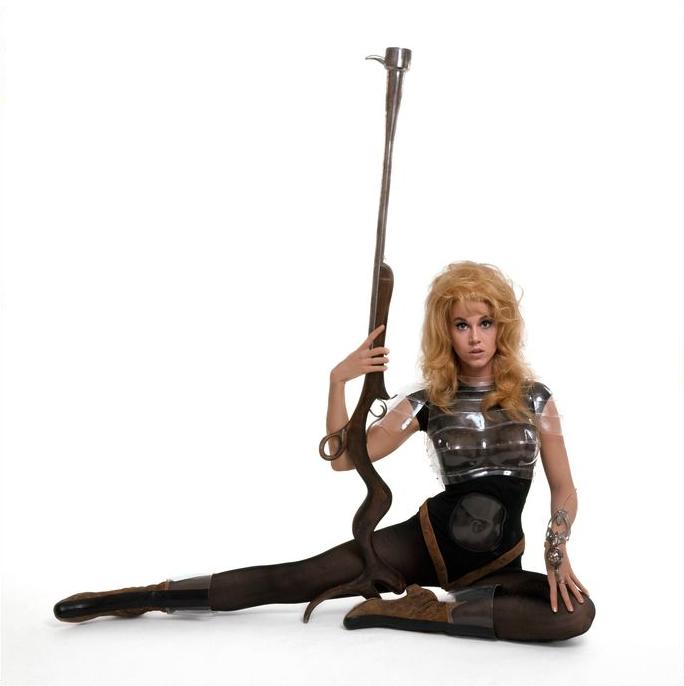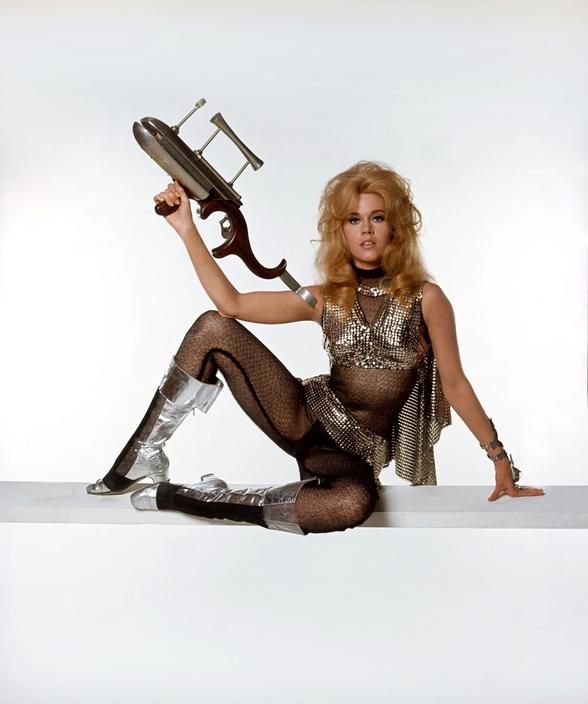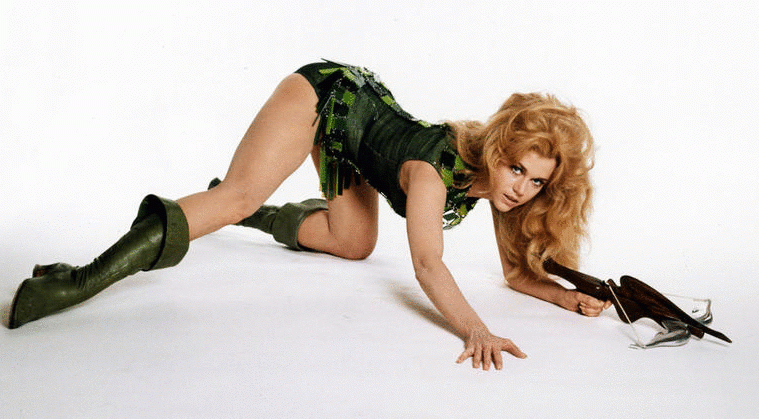Article by Musa Shadeedi
Translations by Hiba Moustafa
Photos: Jane Fonda by David Hurn for film ‘Barbarella’, 1968.
This article is part of the “Hopefully Tomorrow” issue
For a while now, I’ve had been plagued by a question that comes to mind every time I hear about a brother killing his sister, a father slaughtering his daughter in front of people or killing his son when he discovered his relationship with the neighbors’ son, and sometimes, when a son kills his father for having a sexual homosexual relationship or killing his mother. It comes to mind every time a friend tells me that his family is out to slaughter him because of his feminine gestures, or is being blackmailed or threatened with posting his photos by gangs that lure people sexually to photograph and threaten them. It comes to mind every time I watch a video of a homosexual man being beaten and dragged down the street in front of everyone or gang raped because rapists know that authorities will not punish them or that the victim will fear filing a complaint because he would be jailed for homosexuality even if he reported it. As for those who incite the rape of homosexuals in the media, like Moroccan director Mahmoud Freitas, they remain free, and Moroccan lawyer Abdelmawla Al-Maroui who finds it odd that homosexuals file complaints when they’re raped. The brother who killed his sister, Israa Al-Gharib, in Palestine is also free. Even when a homosexual woman, Sarah Hegazi, commits suicide, people begrudge praying for her soul.
This violence exists everywhere around the world. But in this article, I’m investigating the Arabic-speaking region and asking: Why have so many fighting movements throughout history managed to arm themselves in the name of their movement, while Queer 1 or Feminist movements haven’t despite the numerous victims? What stops queers and feminists from defending themselves against all this violence? How can we even imagine a future where we feel safe? And how can we protect ourselves from all that in the future?
A social artistic experience
I talked via Zoom with Fadi Zumot2, a Jordanian artist and fashion designer who tries to rebel against the male-female binary and design from a queer perspective, about the influence of arms (even toy arms) on our safety in public spaces and shaping power balances in those spaces. We also spoke about the role of fashion in protecting or not protecting us from violence.
Fadi performed a social, artistic experiment in the streets of the heart of Amman. He transformed the streets that had repeatedly bullied and assaulted him into his own sanctuary where no one dared to stare at him, simply by carrying a small toy gun as a part of his street outfit. It all started when Fadi visited one of the big malls in Amman during Christmas festivals and saw children ‘shooting’ at each other, as if in a gang war, under the Christmas tree at the shopping center courtyard. Fadi said, “Arms are gender-related. Only boys play with them.” He imagined them growing up before his eyes and their guns turning from plastic and rubber into metal and gunpowder. He saw blood, but he wasn’t convinced of the efficacy of armament. He continued, “That we need arms to defend each other is in itself a problem.”
Through his work as a fashion designer and visual artist, Fadi explored how arms can change our bodies’ relationship with public spaces, our surroundings, and the bodies of the people present in such spaces. The experiment lasted an hour. Fadi told me, “We were on our way to eat falafel and I thought, ‘What would happen if there was a gun tied to my waist? Just the tip showing, would I feel protected and no one would harass me?’ I did it and we went out.” Fadi walked down Rainbow Street in his tight jeans with a gun tied to his waist. He continued, “I felt so powerful that no one could harass me; I had my gun to protect me. I guess it also changed what people thought about who I was, what I could do, whether they could make a comment or even try to because there was some sort of a threat, even if it was just the tip of a toy.” Fadi reached the falafel restaurant, removed his gun from his waist, put it in his handbag, and ordered his meal. He saw people glance at his gun then look away fearing any trouble. Fadi went on to say, “I got the power society bestowed on arms. Suddenly, I got the power to defend myself. My looks gave that impression with all my femininity and without having to hide my true self.”
“…the importance of arms, how they symbolized struggle even if they weren’t used, and how their mere presence on the bodies of male and female fighters, even if they weren’t used, was symbolic because they were people who fought for a cause.”

Photo: Jane Fonda by David Hurn for film ‘Barbarella’, 1968. Fashion by space-age designer Paco Rabanne
Fadi produced his next coat by not only sewing it but also by literally shooting it in the shooting range. In this artwork titled “AIM,” he played both the shooter and target. He said, “I put myself as a target and put myself on the other side as well, as the person who shoots. I held a real gun and shot the coat. It was crazy. There was so much power that when I shot, my body moved back. As much as I felt powerful when I held the gun, I felt uncomfortable.”
Fadi exhibited his work in Wadi Finan Art Gallery. About the exhibition, he said, “People were afraid. Because we fear talking about this topic.” Looking back on this experience, he told me, “I had a problem that I was the one holding the gun. I felt safe, but I also felt like I was establishing the power of arms and promoting the idea that they could protect me. Holding it to have power was problematic for me, even if it was a toy. And this is my problem with my work, even if it was out of trying to explore what it feels like to carry a gun.”
Criminalizing feminist arms
I interviewed feminist activist and life coach Hala Sabah3, founder and director of healthy feminist, about the prevalence of peaceful ideology among Arabic-speaking feminist movement. She explained that, “Peacefulness is so wrong because patriarchy is very violent. So when people say we have to be peaceful or keep away from violence, it’s as if they say it’s okay to be abused, killed and sickened by such an institution and that we must remain peaceful. What is particularly vexing for me as a Palestinian is the idea of ‘not responding to Israelis with violence because we’re better than that,’ though the institutions of Occupation are extremely violent all the time. That’s why I strongly oppose peacefulness. Patriarchy is the sole beneficiary when we tell women that they have to be peaceful and obedient and that they must always smile in the face of their abusers.”
When I asked Hala about available means of resistance and arms, she gave me a broader lens for understanding the term ‘Arms.’ She began with neither guns nor knives, but with a very basic tool. “I love pepper spray very much. I can spray it in the face of anyone attempting to harass me. It gives me time to run away, call the police, or take any action. There’s also anti-rape underwear. I believe women are entitled to use such means.” We also talked about many technological protection inventions, some of which haven’t been manufactured yet. Even if they were, they wouldn’t be available to many women around the world at affordable prices.
Hala then presented a feminist perspective that opposes using such means, explaining that, “Many feminists are against these means. They say why we should live in fear and put ourselves in such situations while it is men who need to change; it’s not women’s business to protect themselves. But I think women should protect themselves. Until men learn to behave, I won’t sit just waiting for someone to rape me. I’m even more irritated by the European countries that prohibit pepper spray or tasers. If you were caught with one, it would be as if you were caught with a gun and you could go to jail, even though they are widely used by police. They turn the simple tool women use to protect themselves into something illegal.”
Lastly, we talked about knives and guns and the impact of carrying them on women’s mental health. “For guns and knives, I think they are more harmful to women than men. If we reached a point where we had to kill, it would be harmful to us psychologically. I think we can protect ourselves without resorting to killing. Also, if I were in a situation where someone was trying to hurt me came too close, I’m not sure if I would have the dare to stab or shoot him. Sure, we can have a starter pistol or a toy gun, but what really scares me is that women could get hurt. If I aimed a gun at a harasser, I’m not sure what his reaction would be. This could increase violence against women.”
A demilitarized ‘struggle’
I met Rama4, a political writer and researcher, in the backyard of a local café. We discussed the changes that her conception of arms and armament had undergone. “When I was young, arms were a bad thing for my family. We never had a gun at home and it was always related to hunting. Anyone with a gun was definitely a hunter and definitely wanted to kill an animal. As a person who loves animals generally, I never liked arms. But when I started reading about liberation movements, I began to understand the importance of arms, how they symbolized struggle even if they weren’t used, and how their mere presence on the bodies of male and female fighters, even if they weren’t used, was symbolic because they were people who fought for a cause. So, I looked at them differently. I began to see the symbolism of AK47 used in posters as something positive, even taking a liberating turn that may be more effective than anything else,” she explained.
I recalled the Black Panther movement that was founded in 1966 in the US and armed black people to face the daily aggression they were exposed to by white gangs and police. The aim wasn’t killing white people or the police, rather stopping their aggression.
A black panther doesn’t attack unless it is attacked, and it will never attack you without raising its tail as a warning. This is what Black Panthers used to do in the streets of the United States, holding their guns and standing at street corners at a proper and legal distance from the police. When a police officer assaulted black people, these arms would be raised in a warning so that the police wouldn’t go too far in violating the law against black people. The aim of this armament was self-protection, not killing.

Photo: Jane Fonda by David Hurn for film ‘Barbarella’, 1968. Fashion by space-age designer Paco Rabanne
Rama and I spoke more about the groups with whom arms are associated. She said, “I used to see people with guns, like those on Facebook posting photos of their cars and guns, hunters and people in police and the army, and I didn’t want to be like them. Hunters, police and army soldiers are three groups that were always connected to having guns in my mind, so to have a gun, I would be like them or one of them. But now, I think differently. I have read about black armament and Palestinian armament. The problem isn’t that arms exist but that they are monopolized. They are a means and not a goal. The goal isn’t to be armed — this isn’t a positive thing — the goal is to become an unarmed society.”
Having agreed on one goal, an unarmed society, we discussed the ways through which this goal could be achieved. From Rama’s point of view, “The means for reaching such a goal is a balance of fear. The importance of armament lies in its being a source of fear and worry for people who can use it against you. This creates an initial balance. You’re afraid of me just as I’m afraid of you; I’m not the only one who is afraid of you because only you have a gun. This resets who can hurt whom.” So, for Rama, the monopolization of arms by those who are close to authority while prohibiting others from possessing arms fuels and facilitates violence, and that violence fuels further monopolization.
This prompted us to talk about the reasons behind the non-armament of Arabic-speaking queer feminist movement up till now. To understand the reasons that stopped this movement from taking up arms, we must understand what armament means in the environment where this movement emerged. “Neoliberal movements/colonial power, and their modern extension in civil institutions have exerted some kind of pressure to disarm struggles. This is because arms are dangerous for power balance and the status quo, which allows them to remain where they are. Even in Palestinian circles, I hear people say the First Intifada (1987 – 1993) was the most successful because it was peaceful and could get our voices heard across the world. In contrast, the Second Intifada (2000 – 2005) was largely armed. But for many Palestinians, it hurt them for the equation has become who has more arms, which is in favor of Zionists.”
Rama continued, “People now see that to have your voice heard in the best possible way as a vulnerable person is to be placed into molds that stereotype you as poor, oppressed and weak. You have to sacrifice yourself to be accepted by international society; that was what boosted us in international society during the First Intifada. So feminists and queers within this political frame who see victimization, appearances, and acting as positive things that can lead to liberation. They think that looking weak, unlike those who raise arms, is something positive. This is problematic.”
When I asked Rama about what she thought about this, she said, “The biggest critique of this idea is that Yasser Arafat spoke for the first time in the UN following the Munich operation in 1972, when the members of the Israeli Olympic team were kidnapped in Germany. On the contrary, international society began to talk with Palestinians when it saw they had threatening arms.”
I concluded by asking her whether we can liberate or defend ourselves without arms. She responded, “We tried as queers to remain silent. We tried building institutions with the state and we tried building institutions outside the state. I wish we didn’t have to put our lives and bodies at stake to be liberated. This is the goal. And if arms can’t achieve it, then why are they afraid?”
Conclusion
Western media interviewed black activist Malcolm X and accused him of violence because of views on self-defense. In 1965, a CBC white anchor asked him whether he promoted violence. His answer was, “I won’t call that violence. I don’t in any way encourage black people to go out and initiate acts of aggression indiscriminately against whites, but I do believe that the black man in the United States and any human being anywhere is well within his right to do whatever is necessary by any means necessary to protect his life and property, especially in a country where the Federal government itself has proven that it is either unable or unwilling to protect the lives and properties of those human beings.” This echoes a speech he delivered in 1964, in which he said, “Concerning non-violence: it is criminal to teach a man not to defend himself when he is the constant victim of brutal attacks. It is legal and lawful to own a shotgun or a rifle. We believe in obeying the law.”
Malcolm X was killed by those ‘non-violent’ people. Non-violence shouldn’t be built on submission and dying in silence as is our case now. If we don’t fight to protect our lives and bodies, no one will protect us. And I see a future where we can protect ourselves on our own without begging for protection and compassion from anyone or entreating killers. I see a future where we aren’t victims, where we aren’t killed every day and where no one blackmails us. It has to be clear that we won’t give up our lives easily.

